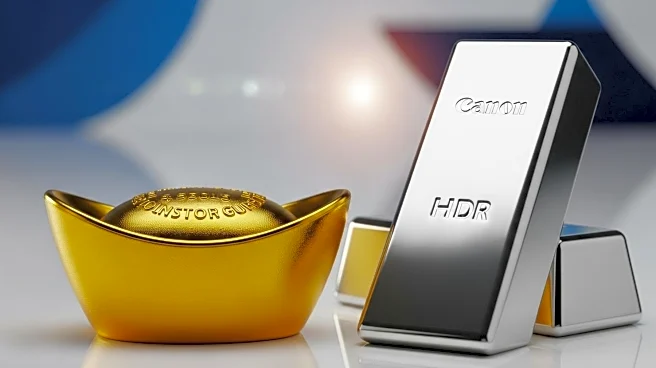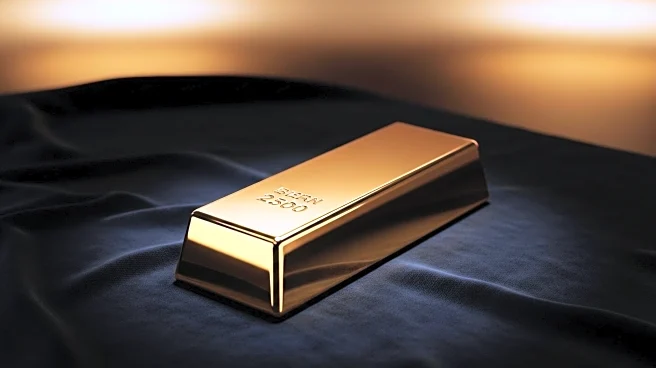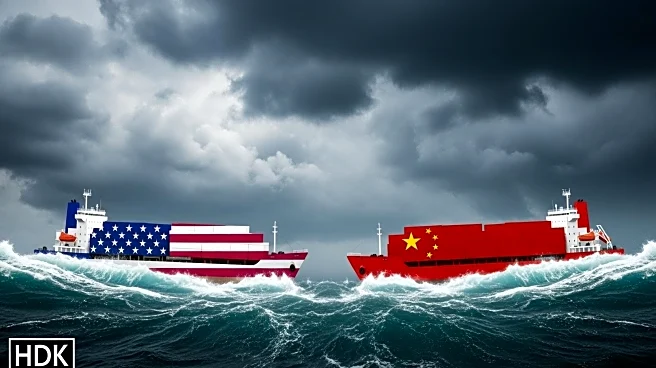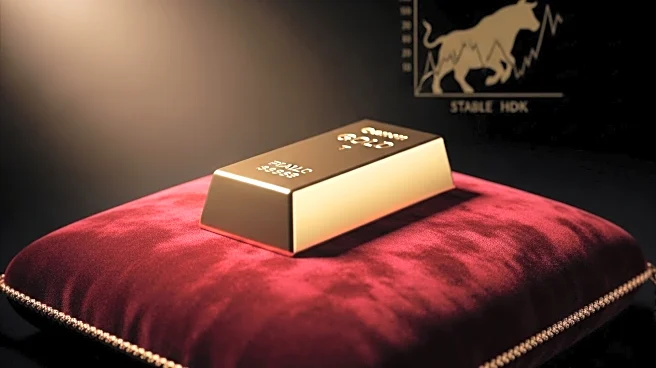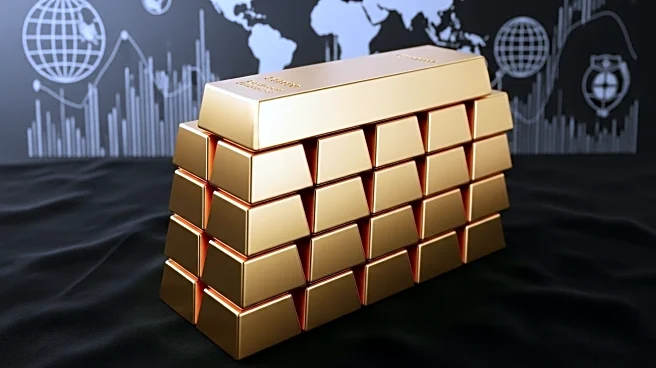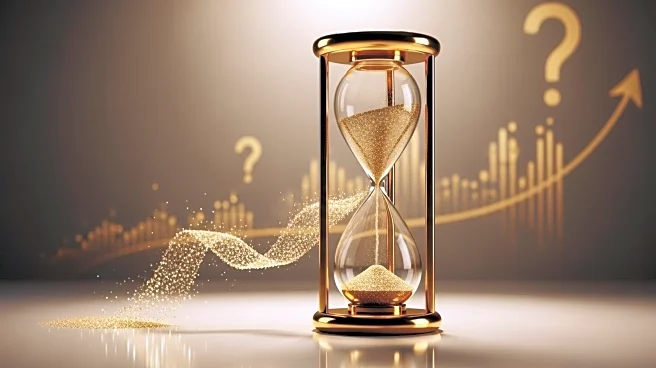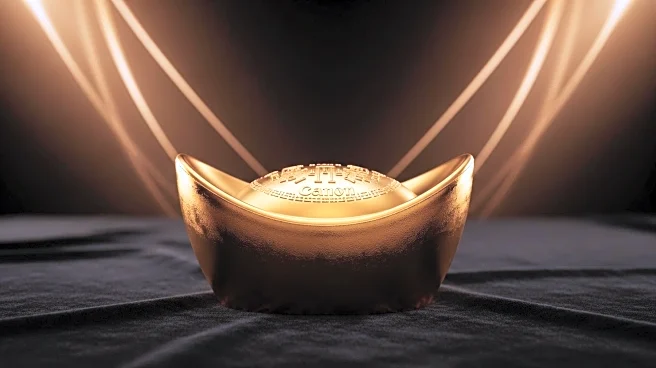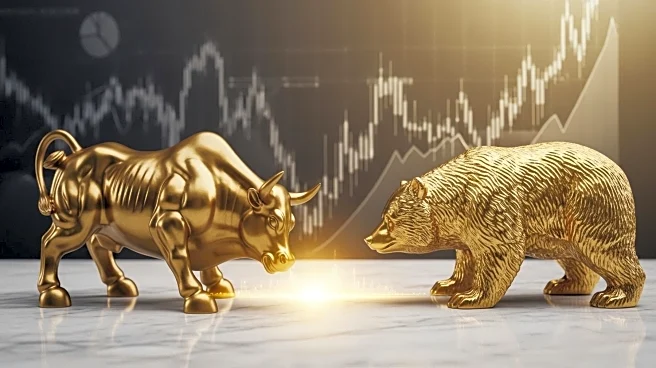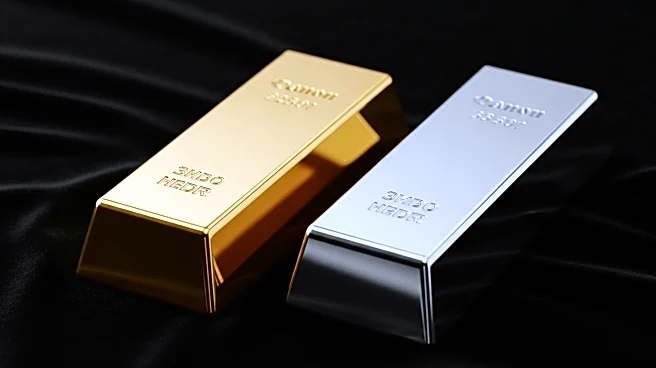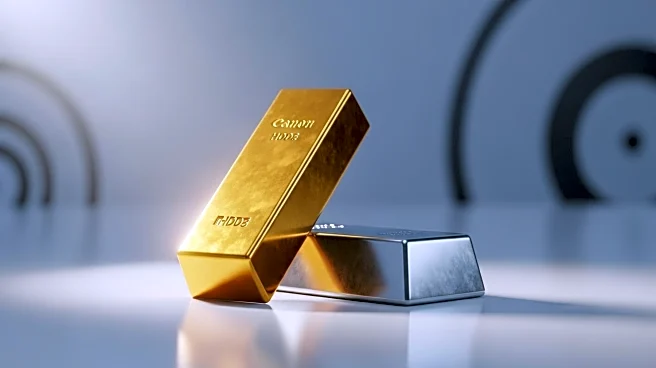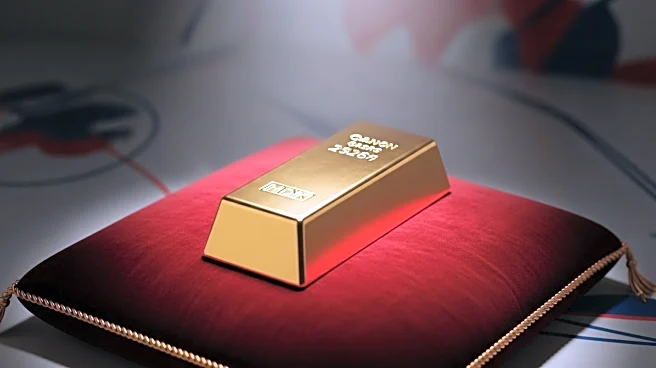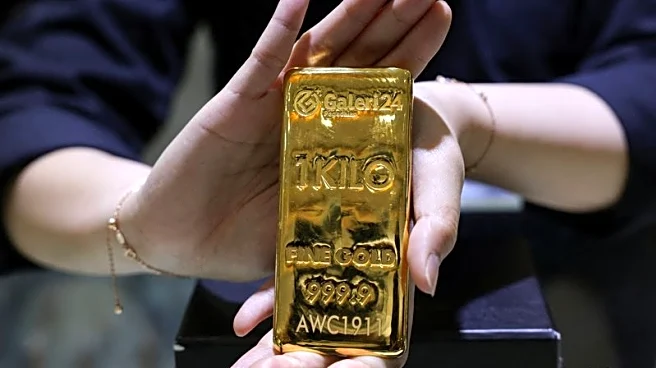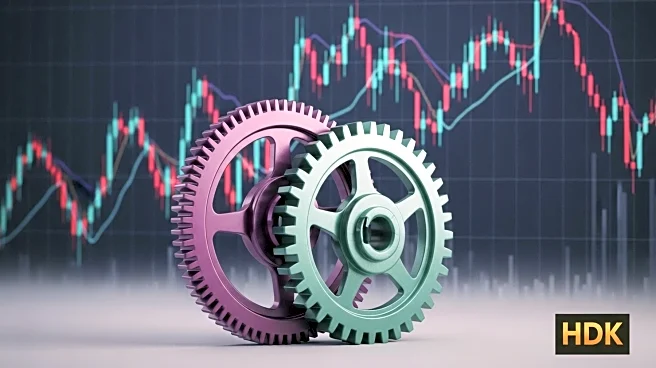What is the story about?
What's Happening?
Gold prices have surged past $4,100 per ounce for the first time, driven by renewed trade tensions between the United States and China, alongside expectations of interest rate cuts. The increase in gold prices is part of a broader trend, with gold climbing 56% this year. Silver also reached an all-time high, with spot silver rising 3.1% to $51.82 per ounce. The geopolitical landscape has been influenced by President Trump's recent actions, which have reignited trade tensions with China, ending a temporary truce. Additionally, traders are anticipating a 97% probability of a Federal Reserve rate cut in October, with a 100% chance for December, which typically benefits non-yielding assets like gold.
Why It's Important?
The surge in gold and silver prices reflects broader economic and geopolitical uncertainties, impacting investors and financial markets. As gold and silver are considered safe-haven assets, their rising prices indicate increased investor caution amid global trade tensions and potential interest rate cuts. This trend could affect various stakeholders, including central banks, investors, and industries reliant on these metals. The prospect of lower interest rates further supports the upward momentum in precious metals, potentially leading to significant shifts in investment strategies and market dynamics.
What's Next?
Analysts predict that gold prices could continue to rise, potentially reaching $5,000 by 2026. However, some experts suggest that a near-term correction might be beneficial for sustaining a long-term uptrend. The ongoing US-China trade tensions and anticipated Federal Reserve rate cuts will likely continue to influence precious metal markets. Stakeholders, including investors and policymakers, will need to monitor these developments closely to adapt their strategies accordingly.
Beyond the Headlines
The current rally in gold and silver prices highlights the complex interplay between geopolitical events and financial markets. It underscores the importance of precious metals as a hedge against economic uncertainty and inflation. The situation also raises questions about the long-term implications of trade policies and interest rate decisions on global economic stability.
AI Generated Content
Do you find this article useful?
